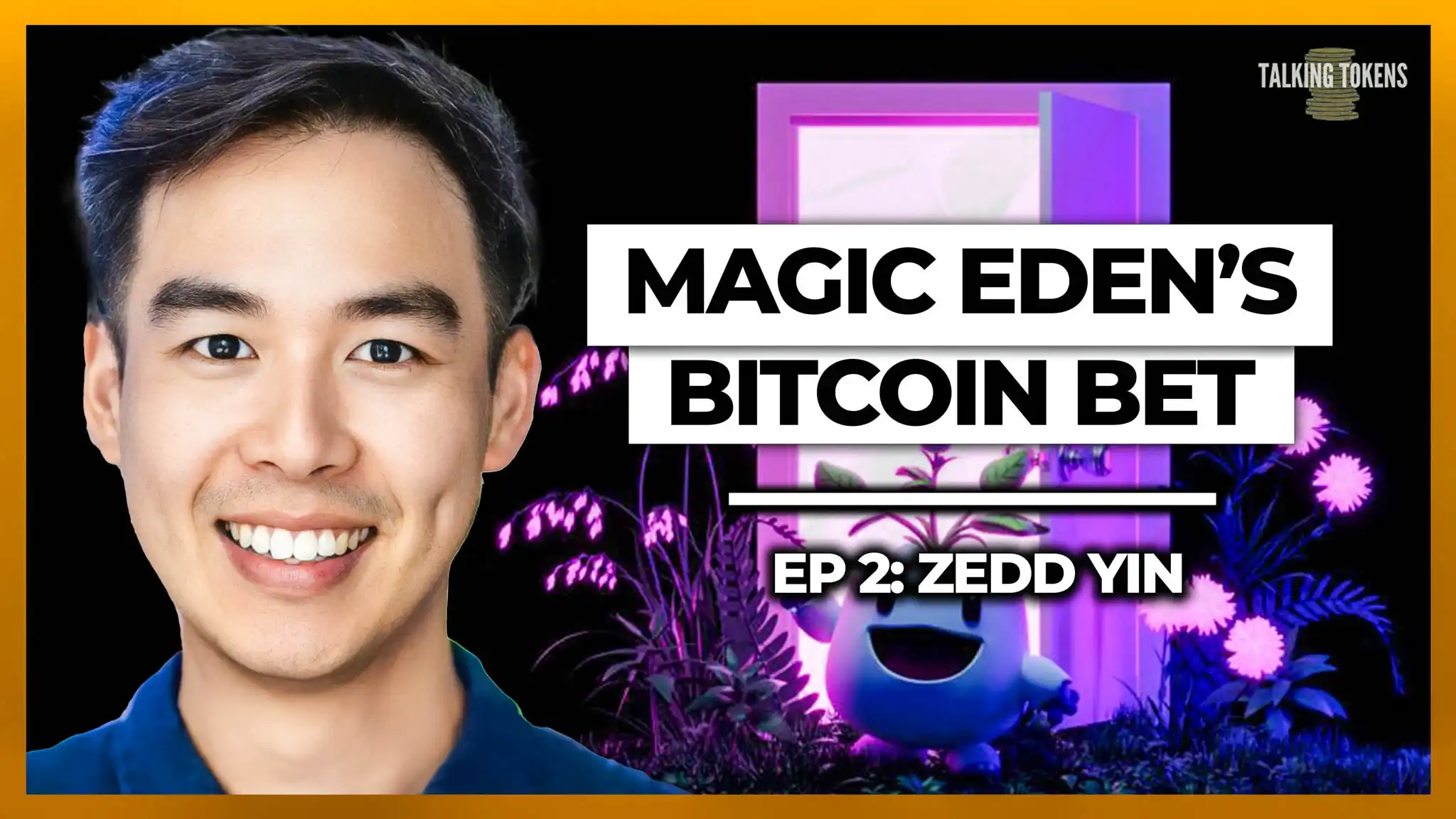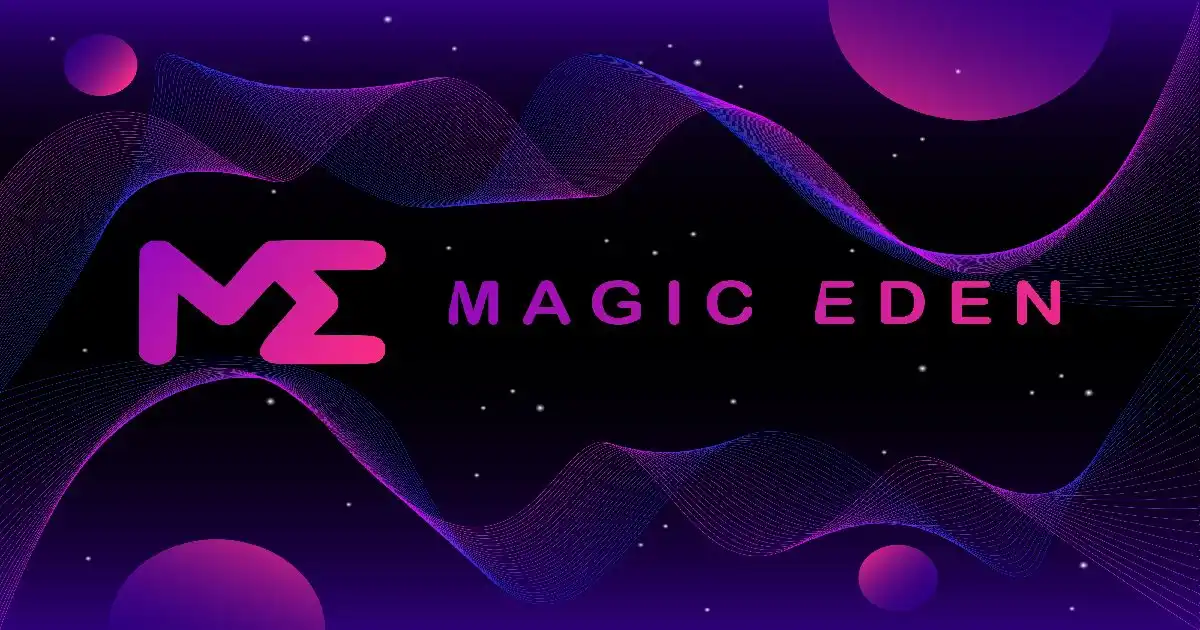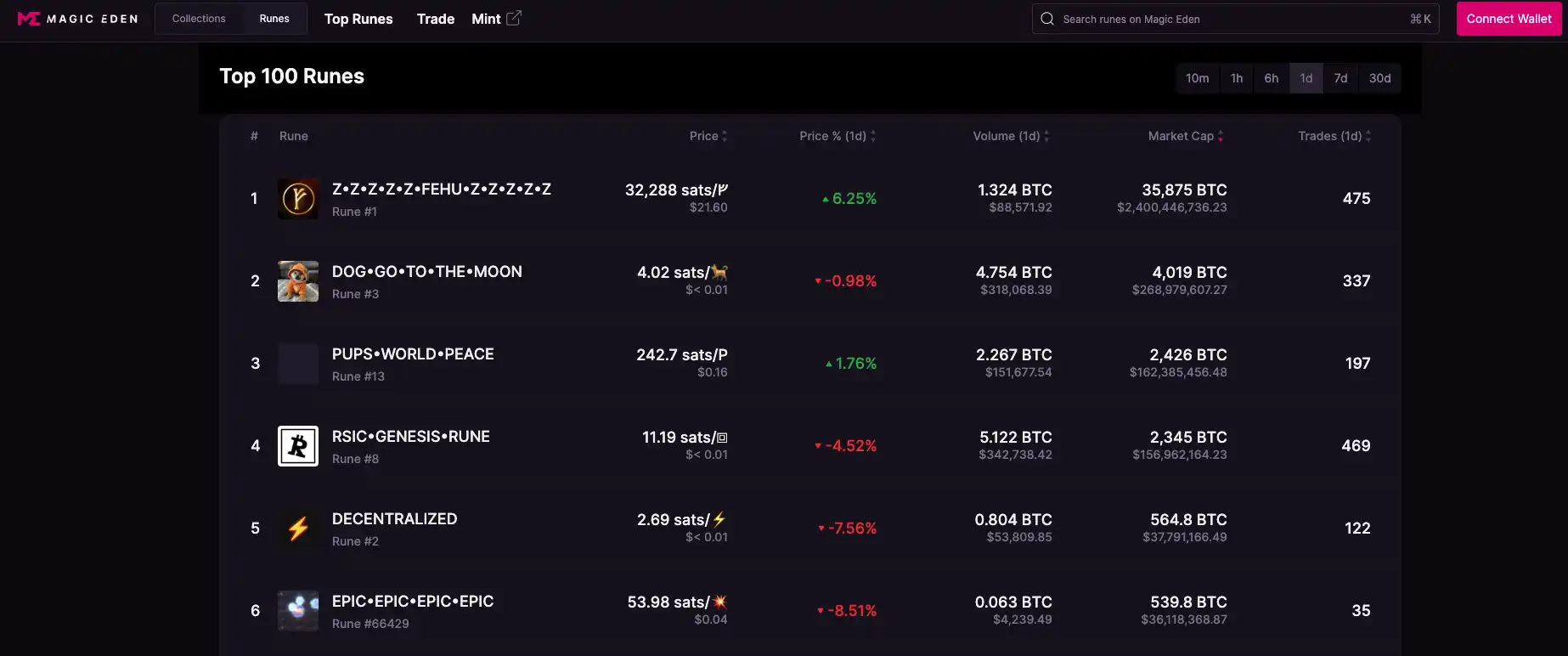Dialog dengan Co-founder Magic Eden: Hanya Bitcoin L2 asli yang akan dipertimbangkan, dan insentif pasar multi-rantai harus
Judul asli: Zedd: Membongkar perjalanan panjang Magic Eden menuju pemenang pasar
Sumber asli: Mabel Jiang, HODLong
Terjemahan asli: Ladyfinger, Lucy, BlockBeats
Artikel ini dihimpun dari podcast HODLong, yang bertujuan untuk mengeksplorasi perkembangan komunitas Web3 bersama para pendengar. Para tamu dialog meliputi operator proyek, investor, peserta ekosistem lainnya, dll., dengan fokus khusus pada komunitas Web3 di Asia. Episode ini mewawancarai Zedd, salah satu pendiri Magic Eden, yang dipandu oleh Mabel Jiang, pembawa acara HODLong. Mabel Jiang adalah mitra Multicoin Capital dan saat ini menjabat sebagai kepala bagian pertumbuhan STEPN, Gas Hero, FSL Ecosystem, dan MOOAR.
Sebelum terjun ke dunia mata uang kripto, karier awal Zedd adalah sebagai konsultan bagi klien korporat di Bain Company. Kemudian pada tahun 2017, Zedd bergabung dengan dYdX, yang menjadi titik awal baginya untuk terjun ke dunia kripto. Selama di dYdX, Zedd bertemu dengan Mabel Jiang.
Zedd telah bekerja penuh waktu di industri mata uang kripto sejak 2017, saat ekosistem pasar kripto masih kecil dan orang-orang terutama membangun beberapa protokol DeFi. Zedd kemudian meninggalkan dYdX dan bergabung dengan Coinbase sebagai manajer produk, tempat ia bekerja selama sekitar satu setengah tahun hingga ia mendirikan Magic Eden pada September 2021.
Saat itu, NFT di Solana sangat populer, sehingga Magic Eden awalnya fokus pada pasar Solana selama sekitar satu tahun. Saat ini, Magic Eden telah merambah rantai lain seperti Bitcoin dan Polygon, terutama hubungannya yang erat dengan ekosistem Bitcoin hampir menjadikannya raja. Menurut data DappRadar, volume transaksi 24 jam pasar NFT Magic Eden mencapai 6,76 juta dolar AS, hanya lebih rendah dari volume transaksi 24 jam Blur sebesar 15,93 juta dolar AS, menjadi pasar NFT terbesar kedua dalam hal volume transaksi.
Keunggulan terbesar Magic Eden adalah biaya transaksinya yang sangat rendah, yang memberikan opsi perdagangan yang lebih ekonomis bagi pengguna dan kreator dibandingkan dengan pasar NFT tradisional. Selain itu, platform ini tidak mengenakan biaya kepada kreator untuk mendaftarkan NFT, sebuah kebijakan yang semakin menurunkan ambang batas bagi artis dan kreator untuk memasuki pasar. Podcast ini membahas pekerjaan yang telah dilakukan Magic Eden untuk mengeksplorasi pasar multi-rantai. BlockBeats menerjemahkan teks aslinya sebagai berikut:
Bagaimana Magic Eden menciptakan pasar multi-rantai?
Dari Solana ke Ekosistem EVM
Mabel Jiang: Ketika Anda memutuskan untuk berekspansi ke pasar Polygon, apakah Anda mempertimbangkan opsi lain?
Zedd: Meskipun pilihannya tidak sebanyak sekarang, kami memiliki beberapa pilihan di depan kami saat itu. Selama proses evaluasi, kami juga mempertimbangkan Immutable, yang telah mencapai beberapa keberhasilan di bidang game. Pada saat yang sama, kami juga mempertimbangkan Polygon dan Avalanche (Avax). Namun, pada saat itu, tidak ada platform yang dapat menunjukkan keunggulan yang jelas sehingga membuat kami merasa harus memilihnya, sehingga setiap pilihan disertai dengan risiko dan ketidakpastian tertentu.
Setelah mempertimbangkan dengan saksama, alasan utama kami memutuskan untuk memilih Polygon adalah karena banyak tim telah mulai mencoba proyek baru di sana, dan Polygon secara aktif bekerja sama dengan banyak proyek game dalam pengembangan komersial. Jadi kami pikir ini akan menjadi titik awal yang tepat dan membantu kami memasuki ekosistem EVM dengan lancar.
Mabel Jiang: Kalian sudah berpengaruh di Solana, tetapi Ethereum dan Polygon adalah wilayah yang sama sekali baru bagi kalian. Bagaimana pengalaman membangun di Polygon dan Ethereum? Bagaimana awalnya kalian memasuki ekosistem ini?
Zedd: Saya harus mengatakan bahwa keseluruhan proses tersebut memang sangat menantang, terutama karena beberapa alasan. Pertama, keputusan kami untuk meluncurkan produk pada saat itu adalah keputusan yang sangat tidak bijaksana. Kami meluncurkan produk kami di platform Polygon dua bulan setelah insiden FTX. Kami telah memulai integrasi dengan Polygon sebelum insiden FTX terjadi.
Namun, ekosistem Solana juga terpengaruh oleh insiden FTX, yang menyebabkan dunia luar keliru percaya bahwa kami telah meninggalkan Solana, tetapi ini sama sekali tidak benar. Tantangan sebenarnya bagi kami adalah bahwa kami gagal mengomunikasikan visi, rencana, dan komitmen serta loyalitas jangka panjang kami kepada Solana secara efektif.
Tantangan lain yang kami hadapi adalah memahami dan berintegrasi secara mendalam ke dalam komunitas. Pertama, perlu ada lebih banyak talenta di dalam perusahaan yang memiliki pemahaman mendalam tentang EVM dan Ethereum. Kedua, lebih sulit dari yang kami kira untuk membangun pengaruh kami di komunitas ini. Meskipun kami telah mencapai keberhasilan tertentu di komunitas Solana, yang memberi kami kepercayaan diri, kami perlu bekerja lebih keras untuk mendapatkan pengakuan yang sama di komunitas Ethereum.
Jika kami harus menilai diri kami sendiri atas kerja awal kami di komunitas Ethereum, saya akan memberikan nilai B, yang berarti kami masih memiliki ruang untuk perbaikan. Kami belum mencapai kesuksesan yang luas di ekosistem Ethereum, terutama di luar pasar NFT yang ada.
Namun, seiring kami terus memperdalam pekerjaan kami di bidang EVM, kami mulai menemukan peluang untuk berkolaborasi. Kami telah menjalin kemitraan dengan kreator senior Ethereum, seperti Yuga Labs, Pudgy, dan Azuki, membantu mereka menangani royalti dan masalah lainnya. Kolaborasi ini tidak hanya membantu kami berintegrasi lebih baik ke pasar, tetapi juga secara bertahap menjadikan kami peserta pasar multirantai sejati. Meskipun tantangan awalnya besar, kami akhirnya membuat kemajuan dalam komunitas Ethereum melalui upaya yang tak henti-hentinya dan penyesuaian strategis.
Mabel Jiang: Bisakah Anda berbagi beberapa detail tentang kolaborasi Anda dengan Yuga Labs? Saya memahami bahwa Anda membuat NFT pasar bagi mereka. Apakah ini mirip dengan solusi label putih?
Zedd: Kami telah berkomunikasi secara konstan dengan tim Yuga Labs selama enam bulan terakhir, dan kami memiliki hubungan karena Chief Gaming Officer kami telah bekerja dengan mantan Chief Gaming Officer Yuga Labs, Spencer. Melalui hubungan ini, kami secara bertahap mulai mengenal satu sama lain. Yuga telah menyaksikan upaya kami dalam menangani royalti di platform Solana.
Yuga menghubungi kami saat pasar Ethereum yang ada memutuskan untuk tidak lagi mendukung royalti. Kami kemudian berdiskusi bersama apakah kami dapat membuat platform yang tidak hanya menguntungkan Yuga tetapi juga seluruh ekosistem kreator, yang berujung pada pembangunan pasar yang menghargai royalti, yang kami luncurkan sekitar empat atau lima bulan lalu. Pada dasarnya, hal ini memberi kami lebih banyak pijakan dan terobosan dalam ekosistem Ethereum, yang sebelumnya tidak kami miliki.
Mendalami Ekosistem Bitcoin dari Ordinals
Mabel Jiang: Bagaimana Anda memutuskan untuk membangun pasar Bitcoin?
Zedd: Kami mengadakan hackathon internal, dan sepuluh teknisi bekerja di California selama seminggu, dan kami meluncurkan pasar dengan sangat cepat. Seluruh proses memakan waktu sekitar tiga minggu, dan kami juga mengembangkan dompet multirantai sehingga aset dapat dipertukarkan di berbagai rantai.
Mabel Jiang: Bagaimana proses bagi Anda untuk mulai membangun sesuatu dalam ekosistem Bitcoin?
Zedd: Seluruh prosesnya benar-benar gila. Pada tahun 2022, protokol Ordinals masih jauh dari jangkauan kami. Namun, pada awal tahun 2023, seorang anggota tim kami memperkenalkan protokol Ordinals kepada kami, dan pada awalnya kami pikir itu hanya konsep teoritis. Namun, segera, kami menyadari bahwa teknologi ini layak dan ada permintaan nyata untuk itu. Kami mengamati di saluran Ordinals Discord bahwa orang-orang sudah mulai berdagang di sana, bahkan menggunakan spreadsheet untuk menyelesaikan perdagangan over-the-counter. Aktivitas ini meyakinkan kami bahwa pengguna sangat ingin memperdagangkan jenis aset ini.
Berdasarkan penemuan ini, kami memutuskan untuk membangun pasar. Saat itu, kami tidak yakin apakah kami dapat menciptakan pasar yang tidak memerlukan kepercayaan dan tidak memerlukan kustodian. Pada titik kritis ini, salah satu pendiri saya, Rex, merancang sebuah arsitektur selama akhir pekan dan menunjukkan kepada kami bahwa ide ini layak.
Mabel Jiang: Penyesuaian apa yang telah Anda buat di tingkat perusahaan untuk hal ini?
Zedd: Ini memang tantangan. Kami pada dasarnya beroperasi dalam model unit bisnis, yaitu, pasar yang beroperasi pada setiap rantai dianggap sebagai unit bisnis yang independen. Setiap unit dilengkapi dengan manajer produk, tim teknik, dan tim bisnis yang berdedikasi. Struktur ini memastikan bahwa tim teknik dan tim bisnis dapat bekerja sama secara erat untuk merespons perubahan pasar dan menerapkan keputusan dengan cepat. Pada saat yang sama, kami juga perlu memastikan bahwa tim dapat mengumpulkan umpan balik pengguna secara tepat waktu dan dengan cepat mengulangi produk berdasarkan hal ini.
Mabel Jiang: Bagi pengguna Solana, saat beralih ke Bitcoin, mereka mungkin perlu mencari ekstensi dompet baru atau cara lain untuk menggunakannya. Dalam kasus ini, apakah mereka akan memprioritaskan penggunaan dompet Anda?
Zedd: Ya, banyak pengguna akan mengunduh dompet Magic Eden, mengonversi sejumlah Sol ke Bitcoin, lalu mulai menggunakan Ordinals. Selain itu, ada beberapa dompet Bitcoin lainnya, seperti OKX dan Uniswap, yang utamanya melayani pengguna Tiongkok, dan Xverse, yang melayani pengguna Barat dan Tiongkok. Ini adalah dompet Bitcoin utama di luar Magic Eden.
Mabel Jiang: Mengenai Bitcoin NFT, apa karakteristik kelompok pengguna target Anda?
Zedd: Kami menemukan bahwa ada lebih banyak pengguna Asia yang menggunakan produk Bitcoin daripada Solana. Selain itu, kami juga memiliki banyak pengguna Solana yang juga menggunakan produk Bitcoin kami. Ada lebih banyak persilangan di seluruh ekosistem daripada yang diperkirakan orang. Kami memiliki banyak pengguna yang bersedia mencoba hal-hal baru dan memiliki pola pikir berkembang.
Mabel Jiang: Menurut Anda, tren apa yang akan muncul pada NFT Bitcoin ini di masa mendatang?
Zedd: Saya pikir akan ada lebih banyak NFT Ordinals yang dibuat. Proyek-proyek ini bukanlah NFT yang praktis, yang menurut saya sebenarnya merupakan hal yang baik. Sebut saja ini pasar barang koleksi, Anda tidak perlu melampirkan fungsi praktis apa pun padanya. Inilah perbedaan utama antara NFT pada Bitcoin dan NFT yang kita lihat pada Solana dan Ethereum.
Banyak orang yang sedang membangun alat untuk mencetak dan membakar Ordinals dan runes. Ada juga banyak orang yang mencoba mencari cara lain untuk menyederhanakan transaksi ini karena jelas lebih sulit untuk berdagang di Bitcoin L1. Ketika Anda memperdagangkan koin meme Solana dan kemudian beralih ke Ordinals, itu seperti pergi ke SPA.
Mabel Jiang: Bisakah Anda menjelaskan secara singkat apa itu Rune dan NFT serta perbedaan di antara keduanya?
Zedd: Ordinal pada dasarnya dapat dilihat sebagai NFT, yang berbeda dari NFT pada ETH dan SOL, yang sebenarnya membakar media atau data langsung pada rantai. BRC 20 dan rune pada dasarnya adalah standar FT yang berbeda. Sebenarnya ada lebih banyak lagi seperti BRC 420 dan seterusnya, tetapi yang utama adalah BRC 20 dan rune.
Runes masih sangat baru, baru berusia sekitar tiga hingga empat minggu, sedangkan BRC 20 sudah ada selama hampir satu tahun. Runes seperti versi BRC 20 yang lebih mudah digunakan, tanpa memerlukan aktivitas pengukiran untuk mentransfernya. Runes juga dikembangkan oleh tim yang sama yang mengembangkan protokol Ordinals. Ada tim kecil yang mengerjakan pengembangan inti Ordinals, yang merupakan salah satu alasan mengapa Runes mendapat banyak perhatian dan kehebohan.
Mabel Jiang: Sudahkah Anda membangun DEX?
Zedd: Kami sebenarnya bekerja sama dengan Exodus. Pengguna dapat mengonversi Sol, ETH, Bitcoin, dll. ke USDC melalui dompet Magic Eden.
Mabel Jiang: Pernahkah Anda mempertimbangkan untuk membangun L2 sendiri?
Zedd: Kami tidak memiliki cukup sumber daya untuk menangani masalah ini saat ini. Jika kami harus berbicara tentang Bitcoin L2, kami hanya akan mempertimbangkan untuk membangun Bitcoin L2 asli, bukan L2 yang disebut sekarang. Karena mereka jelas bukan Bitcoin L2 asli, tetapi hanya menyebut diri mereka Bitcoin L2 untuk narasi, yang sebenarnya lebih seperti sidechain Bitcoin.
Mabel Jiang: Apakah Anda memiliki rencana untuk memperluas dukungan ke blockchain lain di masa mendatang?
Zedd: Kami memantau pasar dengan saksama, dan meskipun kami tidak mengembangkannya secara aktif, kami telah memperhatikan bahwa tidak banyak aktivitas pada rantai EVM. Pada saat yang sama, kami juga memperhatikan beberapa proyek yang membangun rantainya sendiri.
Bagaimana cara memahami dan berintegrasi secara mendalam ke dalam masyarakat?
Menargetkan Insentif kepada Pembeli
Mabel Jiang: Blur tampaknya telah mencapai hasil yang baik dalam insentif likuiditas. Bagaimana Anda melihat persaingan dengan mereka?
Zedd: Karena kami belum memasuki bidang Ethereum, kami tidak memiliki banyak persepsi tentang dinamika pada platform tersebut. Fokus utama kami adalah pada penggunaan aktual pengguna, bukan pada volume transaksi murni, karena indikator volume transaksi mudah dipengaruhi oleh insentif. Kami lebih fokus pada analisis aktivitas pengguna dan pendapatan aktual.
Blur telah melakukan pekerjaan yang hebat dalam memberi insentif likuiditas, yang menurut kami merupakan strategi yang cerdas. Akan tetapi, kami selalu percaya bahwa platform yang kami kejar tidak boleh hanya bergantung pada insentif likuiditas. Kami lebih suka berfokus pada aktivitas pengguna dan pendapatan karena metrik ini lebih realistis tentang kesehatan platform. Selain itu, kami juga menyadari bahwa terlalu mengandalkan volume perdagangan sebagai metrik dapat berisiko.
Mabel Jiang: Seberapa efektif strategi gamifikasi hadiah perdagangan yang Anda terapkan di Magic Eden?
Zedd: Kami menerapkan hadiah yang disebut berlian dan hasilnya sangat baik. Tujuan awal kami adalah untuk mengeksplorasi berbagai cara untuk memberi insentif dan hadiah kepada pengguna, daripada mengubahnya menjadi permainan zero-sum murni. Khususnya di pasar Bitcoin, hadiah dan insentif kami terutama ditujukan untuk pembeli, dan tujuannya adalah untuk mendorong orang membeli NFT. Kami tidak ingin semua insentif menguntungkan penjual, karena hal itu dapat menyebabkan harga dasar terpengaruh secara negatif. Tujuan kami adalah untuk menciptakan lingkungan pasar yang lebih kuat dan sehat.
Mabel Jiang: Di bidang game, kami melihat bahwa Magic Eden telah melakukan banyak upaya, terutama dalam setahun terakhir. Bagaimana Anda menilai efektivitas upaya ini? Dalam proses ini, apakah ada pembelajaran dan inspirasi yang layak dibagikan?
Zedd: Sejak akhir tahun 2022, kami telah membentuk tim game yang beranggotakan sekitar empat orang, yang sebagian besar digerakkan oleh pengembangan bisnis. Tugas utama tim ini adalah bekerja dengan proyek game, membantu mereka meluncurkan NFT, dan memberikan dukungan dalam penggunaan pasar. Melihat kembali 18 bulan terakhir, kami menemukan bahwa ini merupakan pengalaman yang sangat menarik. Pada tahun 2021 dan awal tahun 2022, industri game mengalami gelombang hype. Namun, dalam satu setengah tahun terakhir, banyak tim game yang berfokus untuk memperdalam akar mereka, dan belum banyak aktivitas baru di pasar.
Selain itu, kami juga menghadapi tantangan lain, yaitu, dari perspektif produk dan rekayasa, infrastruktur yang dibutuhkan untuk setiap proyek game sangat disesuaikan, dan kami belum menyediakan dukungan penyesuaian yang cukup mendalam untuk setiap game. Ini berarti bahwa kami masih perlu melakukan lebih banyak upaya untuk memahami dan memenuhi kebutuhan unik setiap proyek game.
Membangun komunitas asli yang kuat
Mabel Jiang: Tindakan efektif apa yang telah Anda ambil untuk membangun dan membina masyarakat asli?
Zedd: Untuk membangun komunitas asli yang kuat, kami mengambil beberapa langkah penting. Pertama, kami memastikan bahwa ada anggota di dalam perusahaan yang dapat mewakili dan memahami budaya komunitas, yang merupakan hal yang sangat penting. Kedua, kami menaruh perhatian besar pada komunikasi dan interaksi media sosial dengan komunitas agar tetap aktif dan terlibat.
Ketiga, kami aktif menyelenggarakan acara offline. Tidak peduli konferensi mana pun, kami akan menyelenggarakan kegiatan terkait untuk memperkuat hubungan dengan anggota komunitas. Terakhir, kami belajar dari kesalahan masa lalu dan terus memperbaiki diri, yang telah memperkuat hubungan kami dengan komunitas secara signifikan. Melalui upaya ini, kami sekarang lebih dekat dengan komunitas daripada sebelumnya.
Mabel Jiang: Apakah basis pengguna Anda berubah selama bertahun-tahun?
Zedd: Selain lokasi geografis, tidak banyak yang berubah. Jumlah orang yang menggunakan Bitcoin kini jauh lebih banyak daripada dua tahun lalu.
Mabel Jiang: Seberapa besar tim Anda sekarang?
Zedd: Sekitar 100 orang.
Mabel Jiang: Apa artinya bagi Anda bahwa pengguna Bitcoin Anda berasal dari Asia? Apakah Anda ingin memperluas komunitas Anda di Asia?
Zedd: Kami memiliki banyak pengguna Solana yang juga menggunakan produk Bitcoin kami, yang menunjukkan sifat lintas pengguna kami. Kami tidak membangun komunitas khusus di Asia saat ini, tetapi itu adalah sesuatu yang ingin kami capai.
Mabel Jiang: Bagaimana Anda membangun komunitas tanpa anggota tim bahasa asli?
Zedd: Saya akui memang sulit, dan saat ini kami belum benar-benar membangun komunitas di Asia. Kami perlu menemukan orang yang tepat dan kemudian menginvestasikan sumber daya untuk mewujudkannya. Jika ada orang yang bersemangat tentang NFT dan produk kami dan bersedia mengembangkan komunitas di Asia, kami dengan senang hati akan berbicara dengan mereka.
Artikel ini bersumber dari internet: Dialog dengan Co-founder Magic Eden: Hanya Bitcoin L2 asli yang akan dipertimbangkan, dan insentif pasar multi-rantai harus berorientasi pada pembeli
Terkait: Cardano (ADA) Stabil: Akankah Pembelian Paus Mendorong Harga Lebih Tinggi?
Singkatnya, Paus memanfaatkan penurunan terakhir untuk mengakumulasi ADA, tetapi akumulasi ini telah stabil selama seminggu terakhir. Jumlah pedagang jangka pendek yang memegang ADA menurun, yang berpotensi menyebabkan berkurangnya volatilitas harga. Garis EMA menunjukkan pola konsolidasi, namun ada potensi terjadinya golden cross dalam waktu dekat. Whales memanfaatkan penurunan baru-baru ini untuk mengakumulasi Cardano (ADA), yang mengarah pada stabilisasi nyata pada harga ADA selama seminggu terakhir. Periode akumulasi ini bertepatan dengan berkurangnya jumlah pedagang jangka pendek yang memegang ADA, sehingga menunjukkan potensi penurunan volatilitas harga. Pada saat yang sama, garis EMA untuk harga ADA menunjukkan pola konsolidasi, mengisyaratkan keseimbangan pasar. Meskipun demikian, ada antisipasi terjadinya golden cross dalam waktu dekat, sebuah sinyal teknis yang sering dikaitkan dengan bullish…











